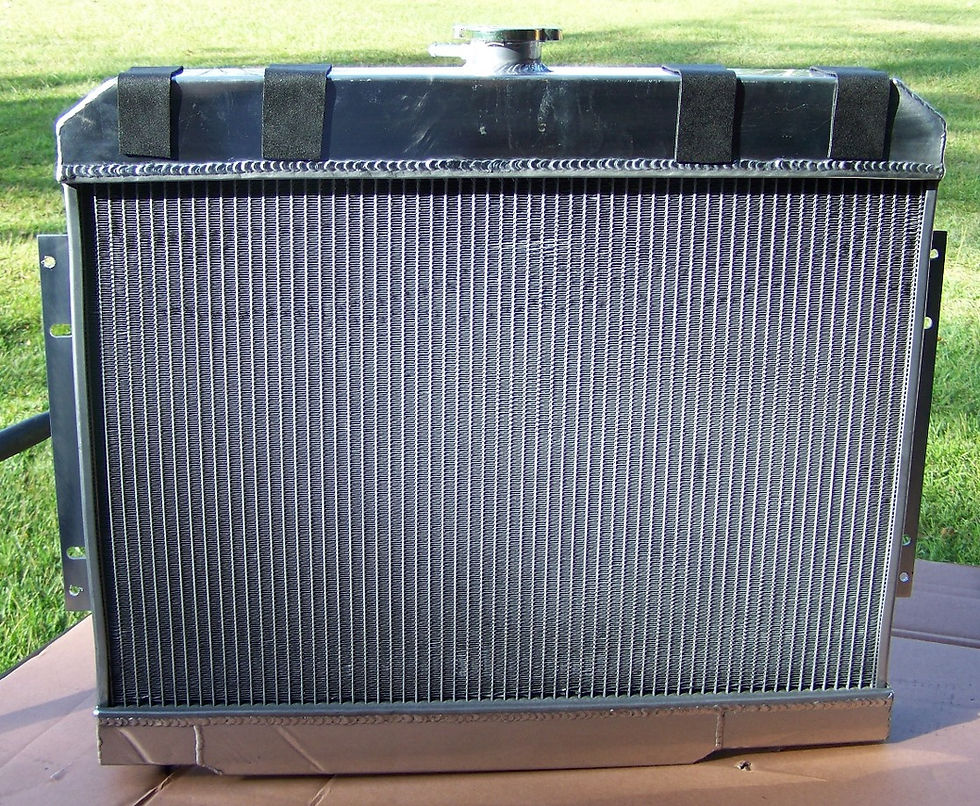Kalamazoo Checker Plant History - Part 1
- by George Laszlo
- Oct 8, 2015
- 3 min read
Copyright 2015 - Checker Car Club of America
Part 1 - The Dort / Handley-Knight Prequel (1920 - 1923)
In the early-1900's, cars were made of wood and metal; wood bodies and metal everything else.
This was also the reality for Morris Markin when he first started building taxis in Joliet and then in Kalamazoo. Indeed, Markin was himself a car body builder when he took over the Lomberg Auto Body Manufacturing Company. Lomberg, in turn, supplied car bodies to the Commonwealth Motor Company which then assembled and sold complete taxis using these wood and metal parts.
When Lomberg and Commonwealth ran into financial difficulties, Markin took over both and became one of the first car manufacturers with responsibility for both the body and chassis components. Only the engine would remain a third-party item.
Timing was on Markin's side in late 1922 when he elected to move the taxi business to Kalamazoo, Michigan. For it was in Kalamazoo that two factories were available for sale; Dort for the wood bodies and Handley-Knight for everything else. Both were vacant and ready for a speedy startup.
The Dort Plant
The Dort Motor Car Company of Flint, Michigan produced cars from 1915 to 1924 over which time over 100,000 cars were sold. In February 1920, Dort purchased two four-story carriage manufacturing plants from the Lull Carriage company located on South Pitcher Street in Kalamazoo. Manufacturing was slated to begin in November.

A statement released by Dort at the time stated that "our present plans contemplate using one of the two four-story brick buildings [the west building] on this property as a wood-working mill. We intend to make a large investment in the form of dry kilns, new boilers, etc. This machinery will probably be all directly connected and sufficient to turn out from one hundred fifty to two hundred sets of automobile body parts per day. The other four-story brick building [the east building] will be used entirely for assembling, painting and trimming closed bodies."

Dort's fortunes as a car manufacturer started to decline around 1922 and a decision was made to cease making car bodies in Kalamazoo in the late-1922 / early-1923 time frame. The company ceased making cars altogether in 1924 following the death of its founder. The availability of a relatively new body shop and a vacant plant must have been very appealing to Morris Markin who was determined to set up the Checker manufacturing operations as quickly as possible. The availability of nearly 600 unemployed auto workers must have been icing on the cake.

A Dort durability demonstration
The Handley-Knight Plant
Handley-Knight cars were manufactured in Kalamazoo between 1920 and 1923. The name of the company is a concatenation of two last names: founder James Handley and engine builder Charles Knight. Knight refused to supply engines to any company that did not include his name as part of the car name.

1921 Handley-Knight Car Advertisement
The Knight engine used a double sleeve valve design which made operation extremely quiet but used more oil than the typical poppet valve engine. The engines were all manufactured by Willys-Overland in Elyria, Ohio. These engines were used until late 1922 or early 1923 when a switch was made to either Midwest (60 hp) or Falls (40 hp) 6-cylinder engines. The Knight part of the name was dropped in December of 1922.

Sleeve Valve Engine
Source: Autocar Handbook - 1919
It is unlikely that too many Handley cars were built with the Midwest or Falls engines since the factory was vacant by May of 1923.
The construction of the 400x80 foot Plant started in February, 1920 on a 40 acre plot on North Pitcher Street. It was based on a design by the Mills, Rhines, Bellman and Nordhoff architectural firm of Toledo, Ohio and cost $250,000. This firm also designed the earlier Willys-Overland plant. The general contractor was H.L. Vanderhorst Company of Kalamazoo.
The construction plan was fairly ambitious and called for the entire facility to be built between February and May of 1920. A production run of 5,000 cars was planned in the first year. How many were actually built is not known. It is also likely that construction delays took place since the first car was introduced in July with production starting in November of 1920.

The Handley Motors Corp. plant in 1923 showing the new Checker logo
The plant was purchased by the Checker Cab Manufacturing Corporation in May of 1923. Renamed Plant #1, it served as the chassis manufacturing and car assembly plant. In addition, it housed the engineering, sales, service and advertising departments.
END OF PART 1





























コメント